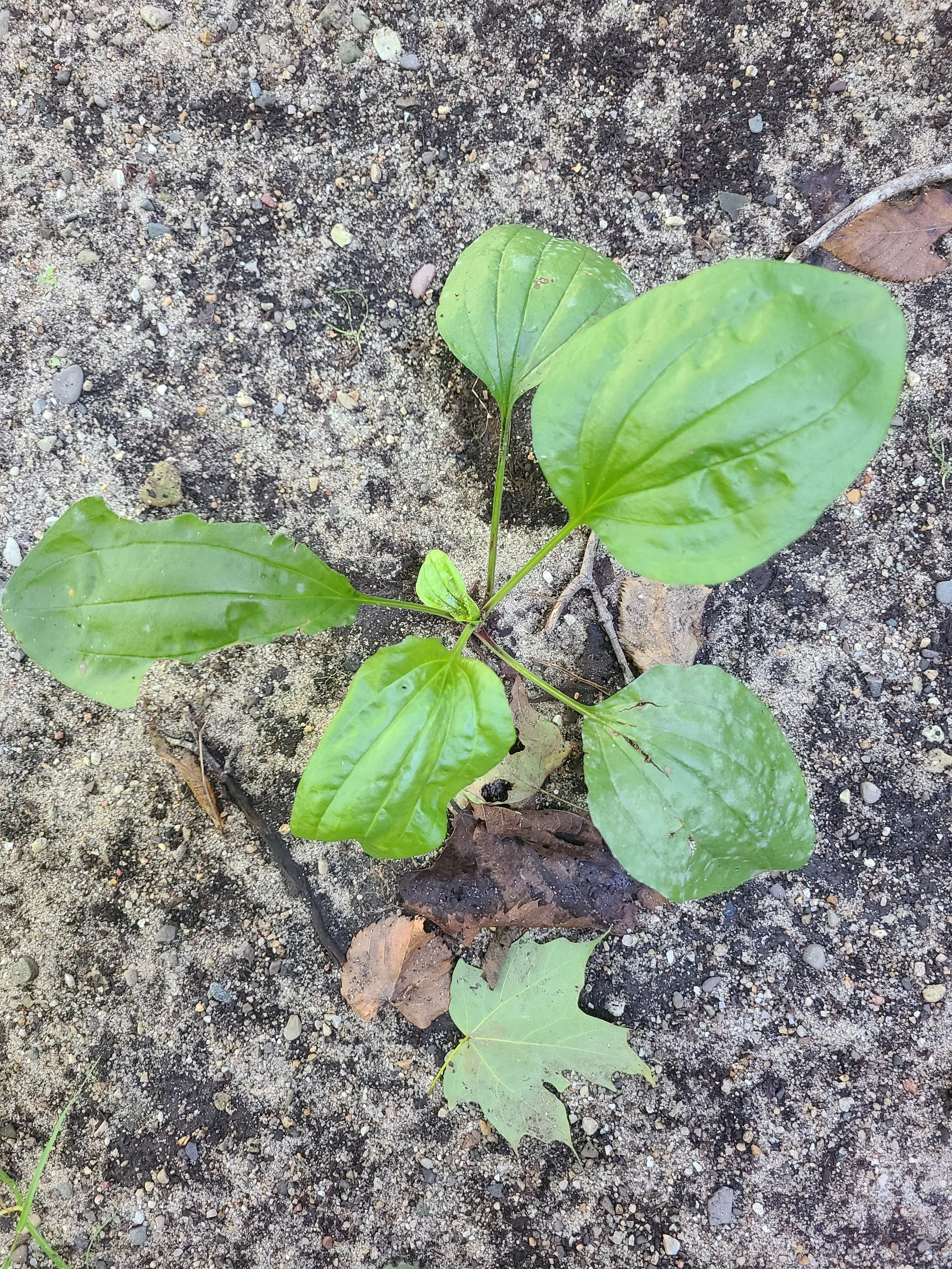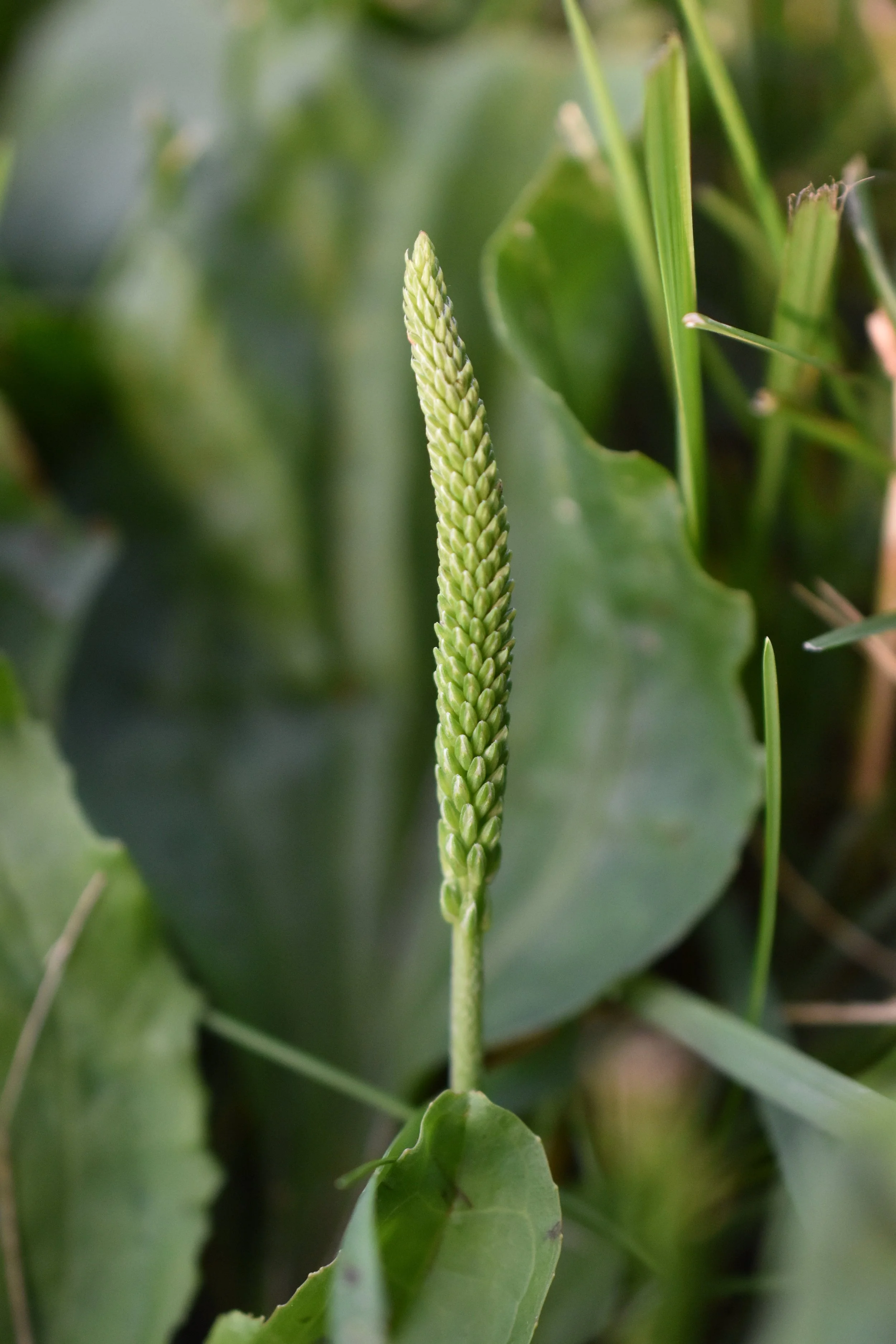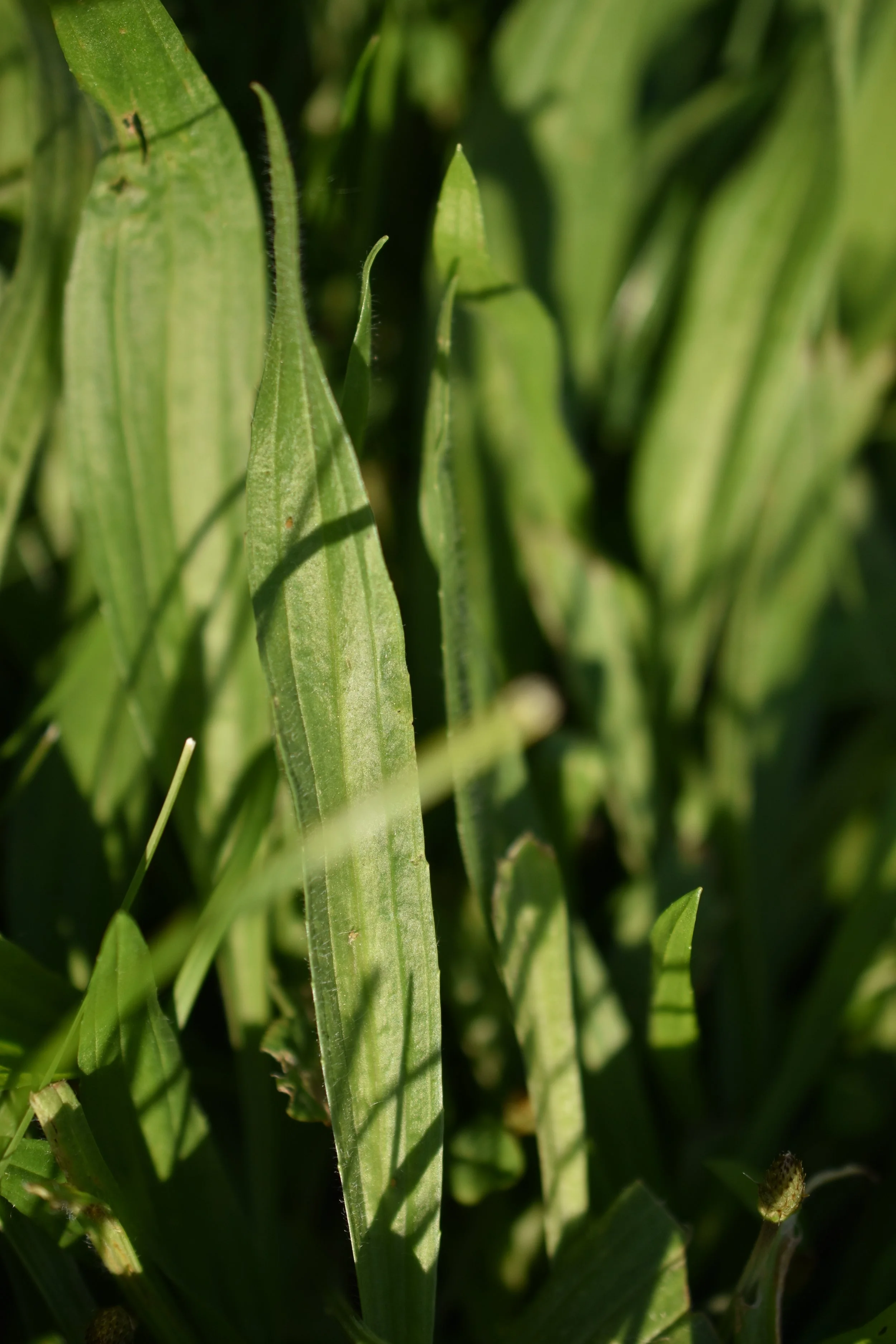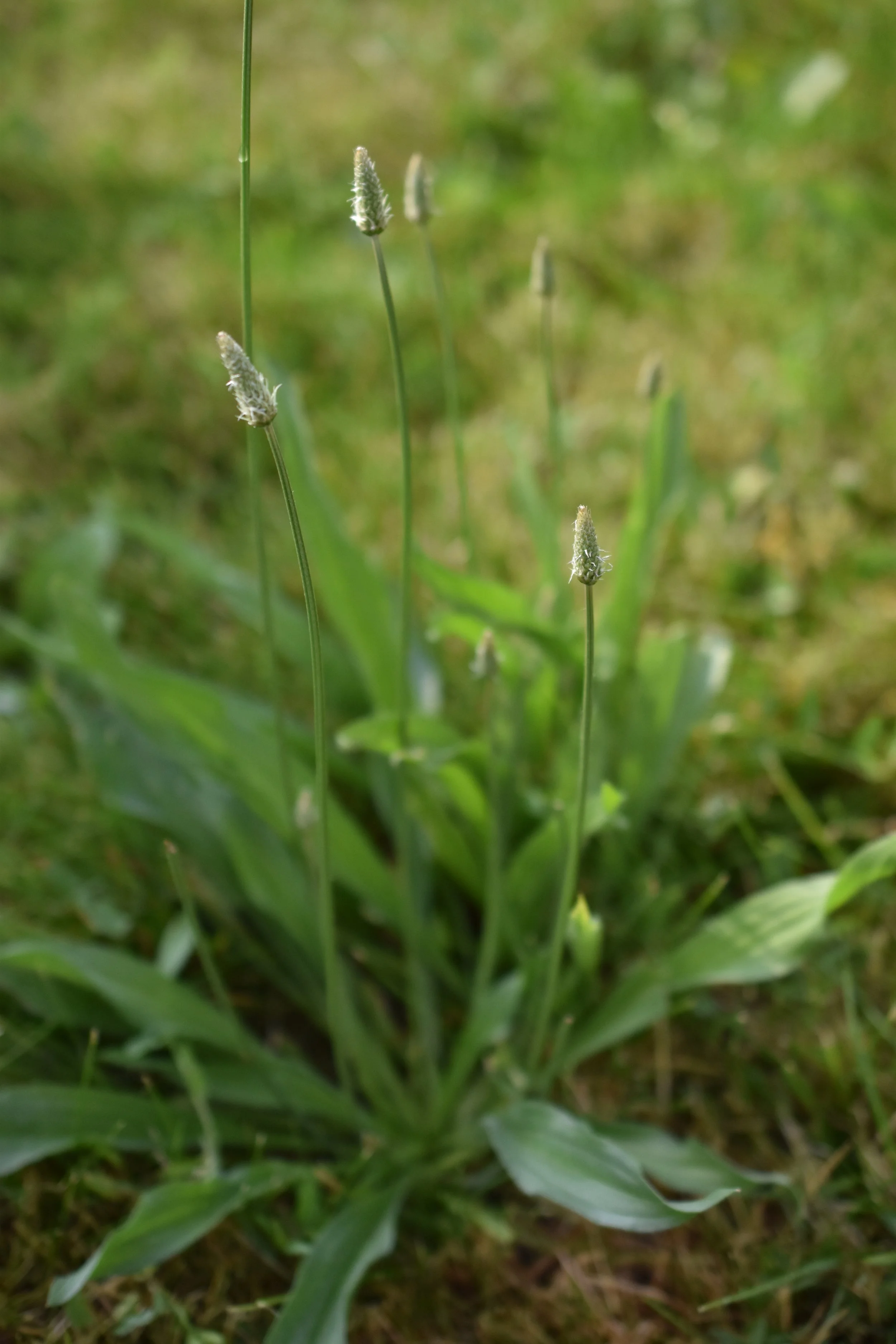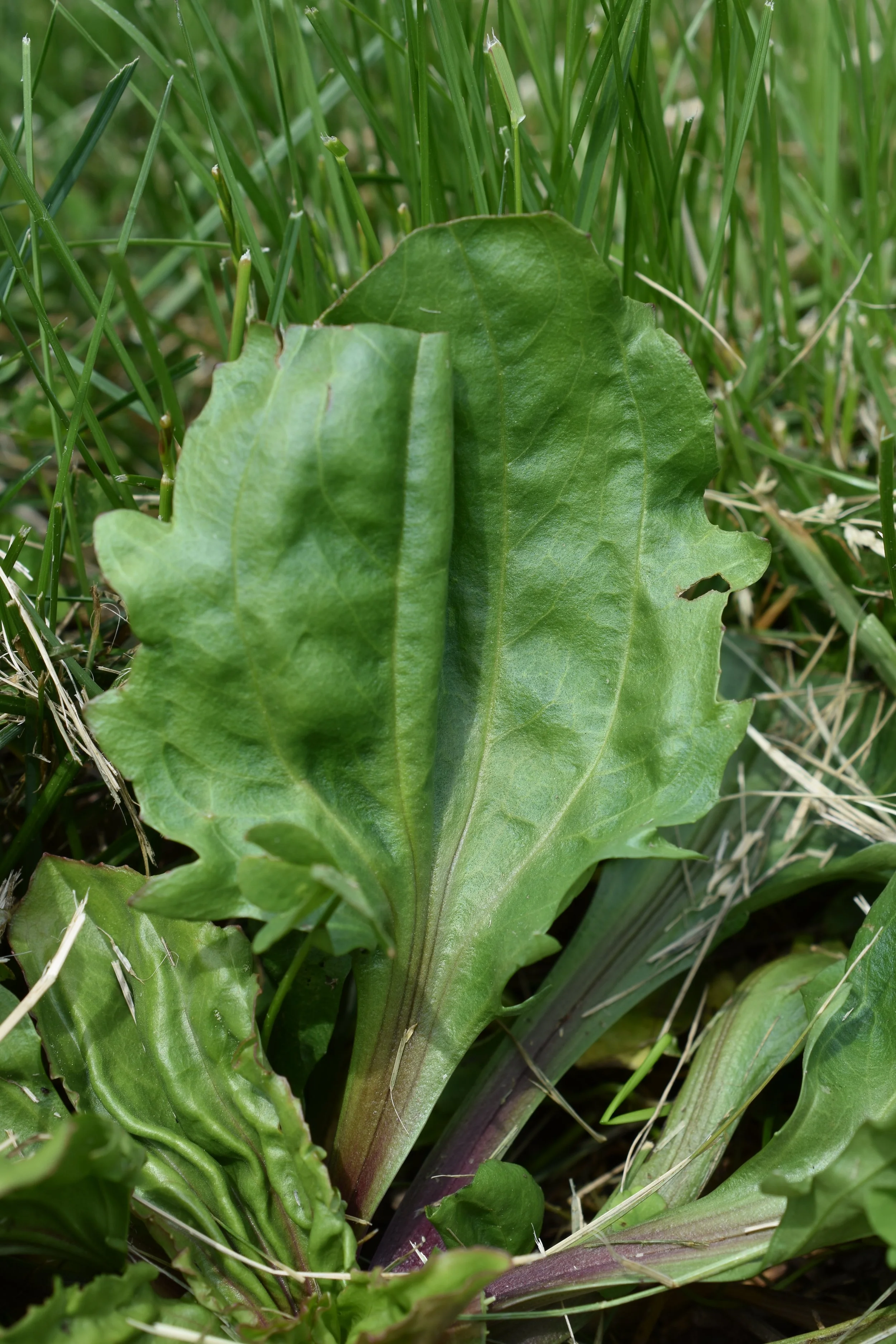Plantain
Plantago spp.
Plant Family: Plantaginaceae
P. major (Braodleaf Plantain, Common Plantain)
Other common names:
P. lanceolata (Narrowleaf Plantain, English Plantain)
P. rugelii (Braodleaf Plantain, Blackseed Plantain)
*native/non-native is specific to the Great Lakes Region of the United States
I’ve learned well over the years that “When in doubt, Plantain.” is a tried and true way to handle most of life’s common injuries and ailments. Pimples? Plantain. Eczema? Plantain. Splinter? Plantain. Constipation? Plantain. Because of his versatility and abundance, he is one of the best herbs for newbies to learn about.
We are incredibly lucky to have such an amazingly versatile plant ally who grows anywhere and everywhere! His deep-veined leaves are easy to spot even amongst the weediest of areas. And, to me, there’s something magical about the way his tissues stretch a little bit — like rubber — before they snap and detach completely. It’s almost as if he’s teaching us how flexible his virtues are and how he can support our own tissues that need nourishing support.
Medicinal Virtues & Edible Parts
Applications are virtually the same for all Midwest Plantago species, except where noted.
Energetics — cooling, grounding, moistening
Flavors — bitter, earthy
Organ/System Affinities — skin, digestive, upper respiratory, urinary
LEAVES
Actions — demulcent, analgesic, pulling, astringent
Ally for — pulling toxins from tissues (i.e. splinters in skin, toxins from intestinal tract, etc.); skin irritations; constipation; diarrhea; conjunctivitis; thrush; sore throat; pneumonia; bronchitis; kidney and bladder infections; hunger (add to salads, etc.)
SEEDS
(AKA psyllium)
Flavors — earthy
Ally for — digestive system and general gut health (added to foods or taken as a supplement)
Organ/System Affinities — digestive
Key Identifying Factors
Plantain is a low-lying plant with wide basal leaves and well-defined veins. He is one of the most hated weeds by suburbanites because he grows almost anywhere, especially if the soil has been recently disturbed. The flower stalks of each species are tall and shoot up from the center, but the flower heads differ in size and shape.
Narrowleaf Plantain (Plantago lanceolata)
Common Plantain (Plantago major)
The most commonly used species (as the name suggests), this variety sports broad leaves with smooth-to-wavy margins. Their petioles are white, which can distinguish it from P rugelii, which has red petioles. The flower and seed stalk is long and upright, producing many fruits per stalk.
Blackseed Plantain (Plantago rugelii)
This species is very similar to P. major as that he has similarly-shaped leaves and flower/seed stalks, but with just a couple small differences. Notice how the leaf margins compare — P. rugelii has margins that are somewhat “lobed” in some cases — as well as the petiole color (P. rugelii has red petioles). And the seeds are very similarly structured to P. major, but have a darker brown/black color.
This is the easiest of the Plantains to identify because he has narrow leaves instead of broad leaves. Notice, though, how the veins are still well-defined and run the whole length of the leaf, just like the other varieties. The other stark difference for P. lanceolata is the flower/seed head. They are still erected straight and tall in the center of the basal leaves, but with a much shorter head.
Toxic Lookalikes
While there are no known toxic lookalikes for any Plantago species, proper identification is still necessary to ensure that the intended medicine is being administered/food is being consumed.
Compare Common and Blackseed Plantain to Wild Violet (Viola spp.) and Lamb’s Quarters (Chenopodium album) — to name only a couple. Pay attention to the differences in flower heads, leaf structure, and seed heads.
Compare Narrowleaf Plantain to Yellow/Curly Dock (Rumex crispus).
When and How to Harvest
Harvest the leaves by hand or with garden scissors all throughout the growing season. I’ve even plucked some through a light layer of snow! The weather, nor their age, seems to affect the taste or potency. Gather the seeds (of P. major and P. rugelii only) after the husks are fully ripened to a light-to-dark brown color. Each husk holds many, many tiny black seeds.
All parts of this plant are generally regarded as safe (GRAS).
Precautions
Because the limited information above came from personal experience of one person, it is highly recommended that you continue learning from other trusted sources. Here are a few places to start!
Other Resources
The Earthwise Herbal: A Complete Guide to Old World Medicinal Plants by Matthew Wood
Midwest Foraging: 115 wild and flavorful edibles from burdock to wild peach by Lisa M. Rose
Midwest Medicinal Plants: Identify, Harvest, and Use 109 Wild Herbs for Health and Wellness by Lisa M. Rose
American Indian Healing Arts: Herbs, Rituals, and Remedies for Every Season of Life by E. Barrie Kavasch and Karen Baar
Magic and Medicine of Plants by Reader’s Digest
American Herbal Products Association’s Botanical Safety Handbook
Encyclopedia of Herbal Medicine: 550 herbs and remedies for common ailments by Andrew Chevallier, FNIMH
Growing & Using Healing Herbs by Gaea and Shandor Weiss
500 Treatments for 100 Ailments: Integrated complementary and conventional medicine for the most common illnesses by Dr. Christine Gustafson, MD; Dr. Zhuoling Ren, TCMD; Beth MacEoin, MNCHM, RSHom; Dr. Geovanni Espinosa, ND, LAc, CNS, RH (AHG); Stephanie Caley, BSc (Hons) MNIMH
The Modern Herbal Dispensatory: A Medicine-making Guide by Thomas Easley and Steven Horne
Wild Remedies: How to forage healing foods and craft your own herbal medicine by Rosalee de la Foret and Emily Han
Rosemary Gladstar’s Medicinal Herbs: A Beginner’s Guide by Rosemary Gladstar
Herbs for Pets: The natural way to enhance your pet’s life by Gregory L. Tilford and Mary L. Wulff
The Rodale Herb Book: How to Use, Grow, and Buy Nature’s Mircale Plants, an Organic Gardening and Farming Book
Books
Websites & Videos
These statements and claims have not been evaluated by the Food and Drug Administration.
This information is not intended to diagnose, treat, cure, or prevent any disease. For educational purposes only.


